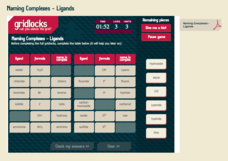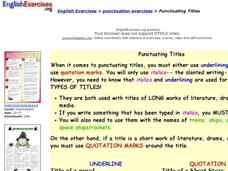CK-12 Foundation
Microscopes: Focal Point
The 1590s saw the invention of the first compound microscope. Scholars learn about how microscopes work and how to properly focus one. The lesson stresses the science fields that use microscopes and the difference between electron...
PHET
Capacitor Lab
The first capacitor was a Leyden jar, invented in 1745. Physics scholars explore capacitors in an engaging simulation. They may view one or set up circuits which contain two to three either in series or parallel. Other views include...
PHET
Generator
Michael Faraday was self-educated, earned an honorary doctorate from the University of Oxford, invented the first Bunsen burner, discovered the laws of electrolysis, and proved that a changing magnetic field produces a current. In this...
CK-12 Foundation
Ballistics Tests
How did scientists measure the speed of incredibly fast things before the invention of high-speed photography? Scholars virtually perform ballistics tests to discover the process. They control the rifle type, bullet mass, and target...
Royal Society of Chemistry
Naming Complexes—Ligands
Naming complexes can be, well, pretty complex! Simplify a study of ligands using interactive puzzles. Junior chemists match up the name, formula, and complex name, then solve a series of logic games with the information.
American Museum of Natural History
Talking to Fireflies
Fireflies are more than just mobile twinkle lights. An online interactive lesson teaches individuals about the light patterns fireflies use to communicate with each other. After they practice the patterns themselves, they could be...
American Museum of Natural History
What's This? Feeding
Some species have pretty creative methods for catching food. Young scientists learn about some interesting ways organisms get the nutrients they need by navigating an online interactive lesson that would be suitable for a remote learning...
American Museum of Natural History
Rising CO2! What Can We Do?
It is colorless and scentless, but it makes a large impact on the environment. Learners explore carbon dioxide emissions and what they mean for the environment using an interactive graph. They review changes over time and how they impact...
American Museum of Natural History
What's This? Reproduction
Attracting the right mate is as important for humans as any other species. An interesting lesson teaches individuals about several strategies that animals and plants have adapted to attract their mates. From colorful nests to powerful...
Curated OER
Energy Alternatives Explorations
In this energy alternatives explorations learning exercise, students explore alternative energy sources by using the linked web resources to answer 8 questions about different resources and identify the ones that would work in their...
Curated OER
"Who Am I?" - Quiz #2
In this "Who Am I?" quiz worksheet, students examine the 12 clues regarding noteworthy scientists born between 1452 and 1951. Students identify the scientists and click on links to check their answers.
Curated OER
Animal Adjectives
In this animal adjectives worksheet, students write an animal next to each adjective, write sentences with the adjectives, and answer short answer questions about adjectives. Students complete 5 activities total.
Curated OER
Archaeology For Kids Quiz 83
In this archaeology for kids quiz 83 worksheet, students interactively answer 12 multiple choice questions about the history of money, as part of an online magazine.
Curated OER
Archaeology and History
In this archaeology worksheet, students draw the given chart into a folder and copy the given points. Students then write the missing word 'historians' or 'archaeologist' for the sentences. Students visit an interactive timeline website...
Curated OER
Archaeology For Kids Quiz 50
In this archaeology for kids quiz 50 worksheet, students interactively answer 4 multiple choice questions about mummies, as part of an online magazine.
Curated OER
ESL: Punctuating Titles
When are titles underlined, italicized, or placed in quotation marks? Take your class to the computer lab to give them some independent practice. Here they read through the information, examples, and explanations provided. They then...
Curated OER
The Wright Brothers
In this online interactive Wright brothers worksheet, students respond to 8 fill in the blank and multiple choice questions regarding the information included in the provided paragraphs.
Curated OER
How Many?
In this measurement worksheet, students complete a 12 question multiple choice online interactive assessment about standard modern and ancient measurement.
Museum of Science
Museum of Science (Boston): Leonardo's Mysterious Machines
A game that showcases the inventive genius of Leonardo da Vinci, who made drawings of helicopters, planes, and tanks long before these machines ever became modern-era realities. Have fun learning about Leonardo's many ideas while you...
Other
Explora Vision: Explora Vision Official Web Site
ExploraVision is a highly interactive site for both educators and K-12 students. It encourages them to create and explore future technology by combining their imaginations with the tools of science. All inventions and innovations result...
Other popular searches
- Science Inventions 6th Grade
- Science Inventions 1st Grade
- Ancient Science Inventions
- Science Inventions 6th
- Incidence Science Inventions
- Physical Science Inventions
- Science Inventions Eliticity
- Ancience Science Inventions
- Science Inventions Eletisty
- Science Inventions Elitist
- Science Inventions Elasticity



















